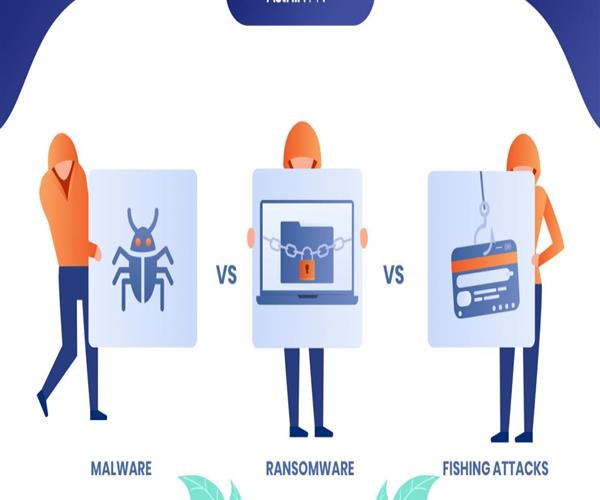Phishing and malware attacks are both types of cyberattacks that can compromise the security of an individual or organization's computer systems, but they are distinct in their methods and goals.
Phishing attacks are typically attempts to trick individuals into revealing sensitive information, such as login credentials or personal information. The attackers create fake emails or websites that appear to be legitimate, and then use social engineering techniques to trick the victim into providing their information. For example, a phishing email might appear to come from a trusted source, such as a bank or online retailer, and ask the recipient to click on a link and enter their login information. Once the attacker has this information, they can use it to access the victim's accounts or steal their identity. Phishing attacks can also be used to distribute malware, such as by tricking the victim into downloading an infected attachment.

Malware attacks, on the other hand, are focused on infecting a computer or network with malicious software. This can include viruses, trojans, or other types of software that are designed to disrupt or compromise the system. Malware can be spread through a variety of methods, including email attachments, malicious websites, or infected software downloads. Once installed, malware can do a wide range of damage, from stealing personal information to disrupting the system's functionality. Some types of malware are designed to spread to other computers or networks, creating a wider threat.
The goals of phishing and malware attacks can also differ. Phishing attacks are typically focused on stealing information, such as login credentials or financial information, that can be used for fraudulent purposes. Malware attacks, on the other hand, can have a wider range of goals, depending on the type of malware. Some malware is designed to disrupt the system or network, while others are focused on stealing data or controlling the computer remotely.
In summary, while phishing and malware attacks are both serious threats to computer security, they use different methods and have different goals. Phishing attacks are focused on tricking individuals into revealing sensitive information, while malware attacks are designed to infect and compromise computer systems. It is important for individuals and organizations to take steps to protect themselves from both types of attacks, such as by using antivirus software, keeping software up to date, and being cautious when clicking on links or downloading attachments.